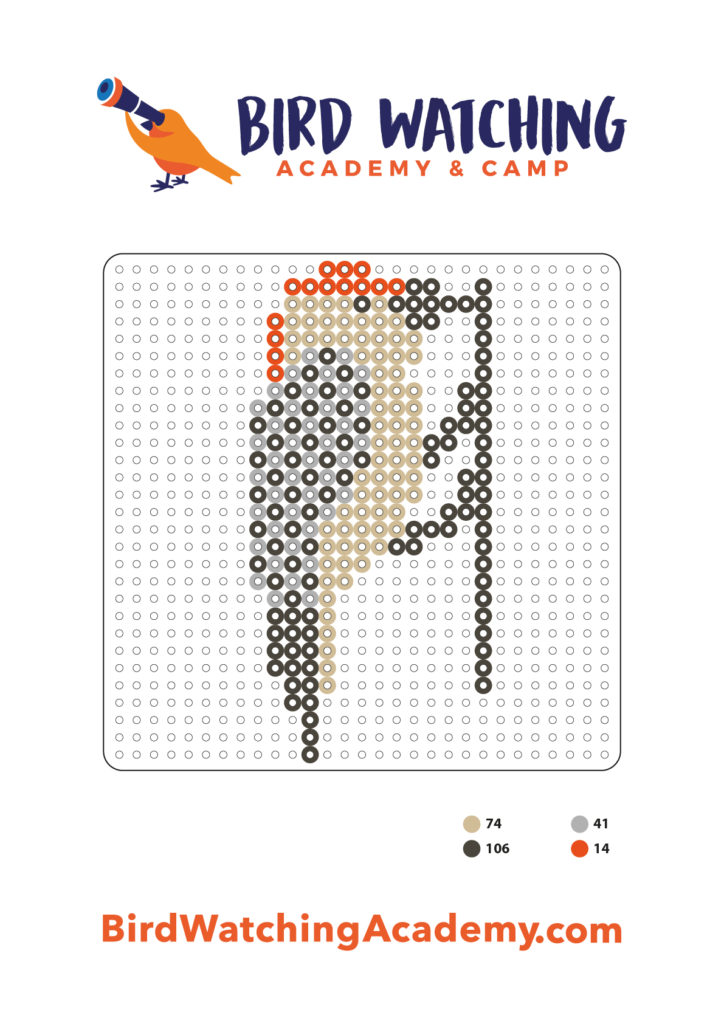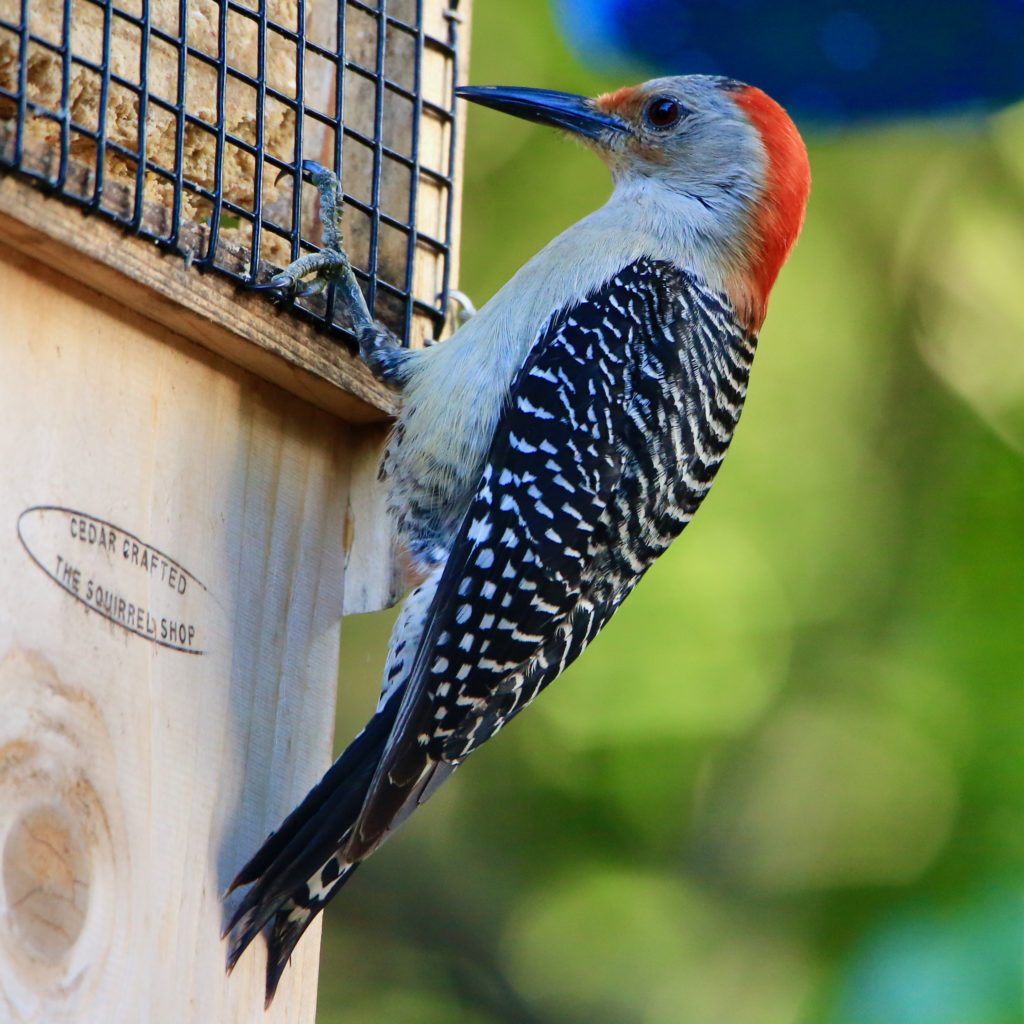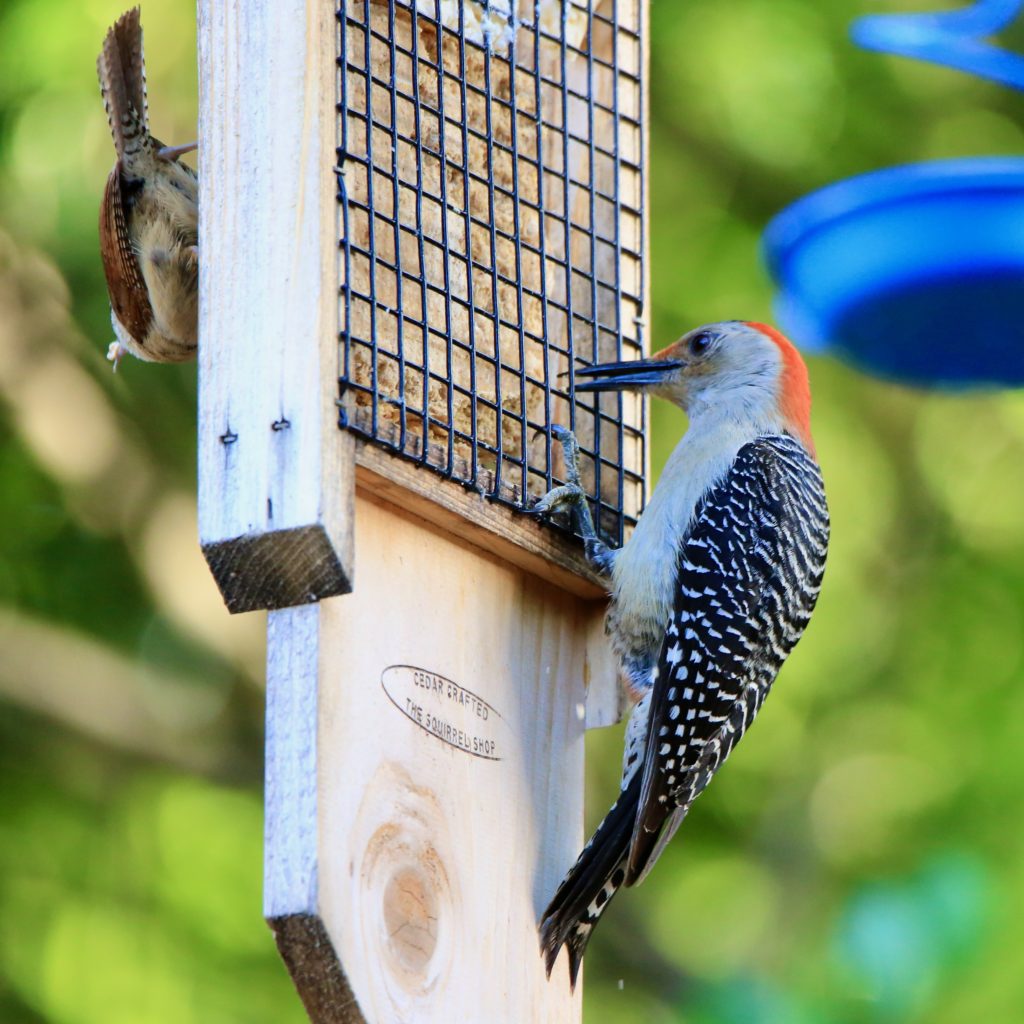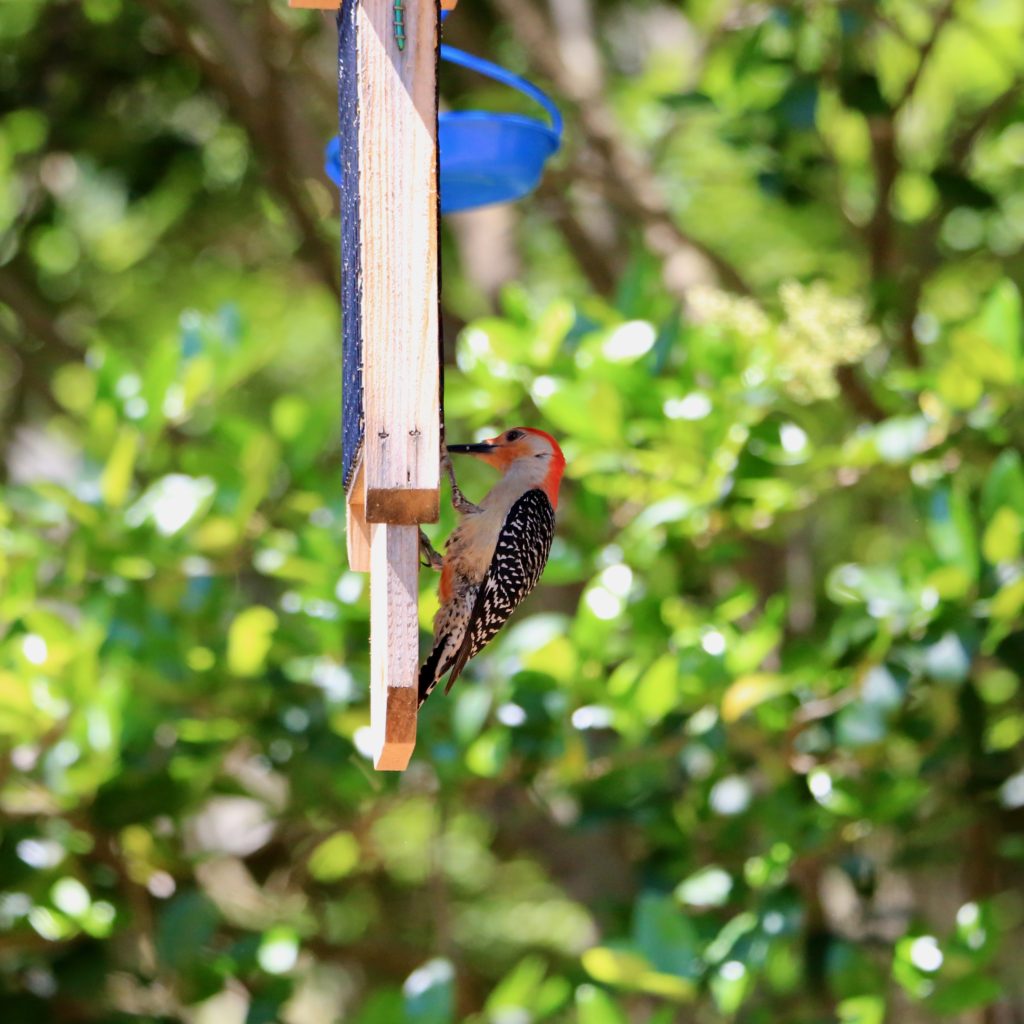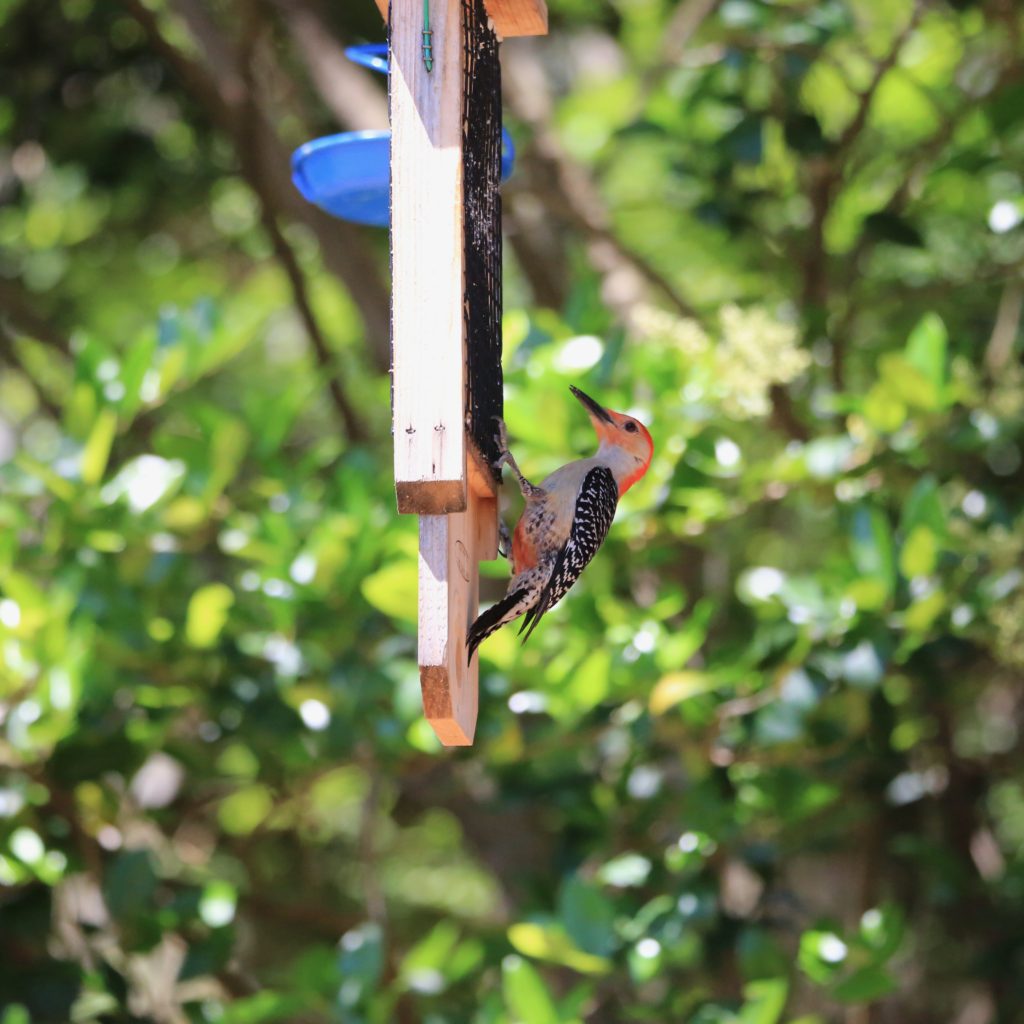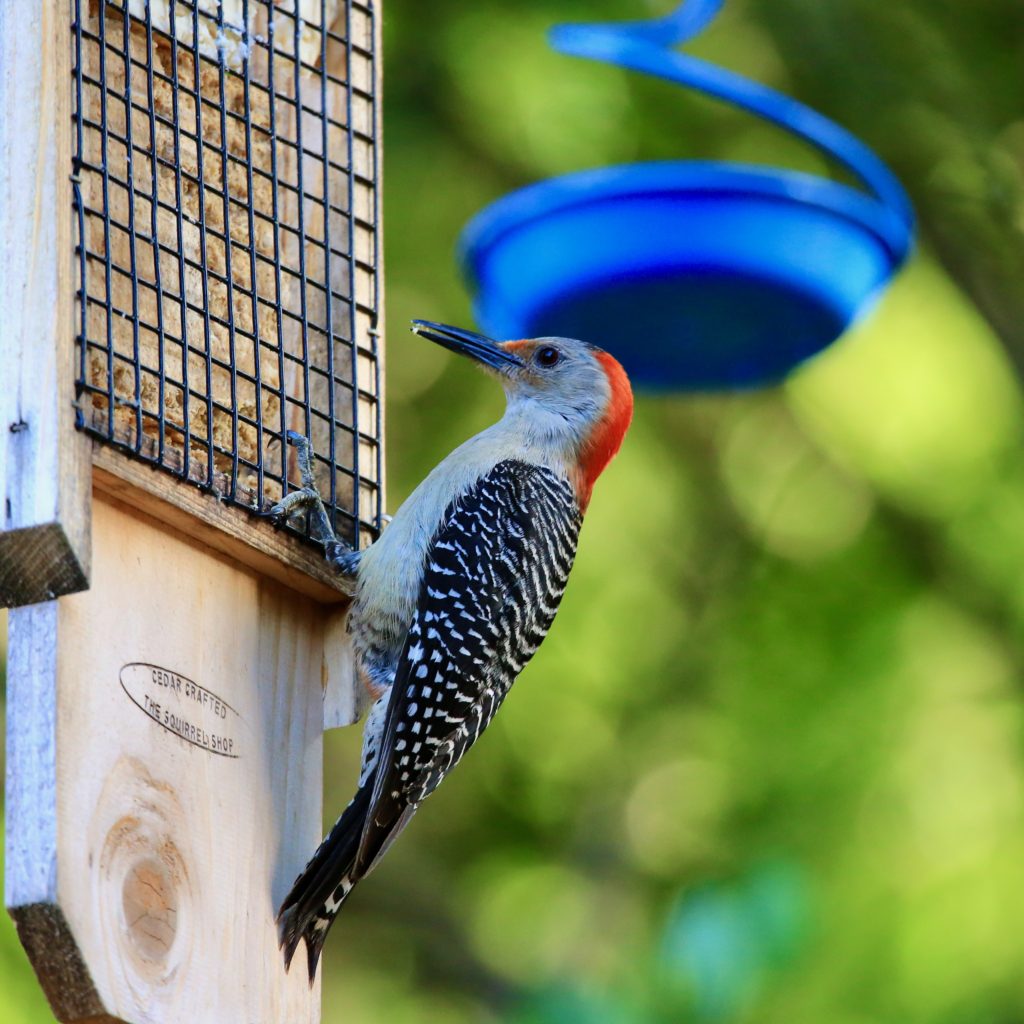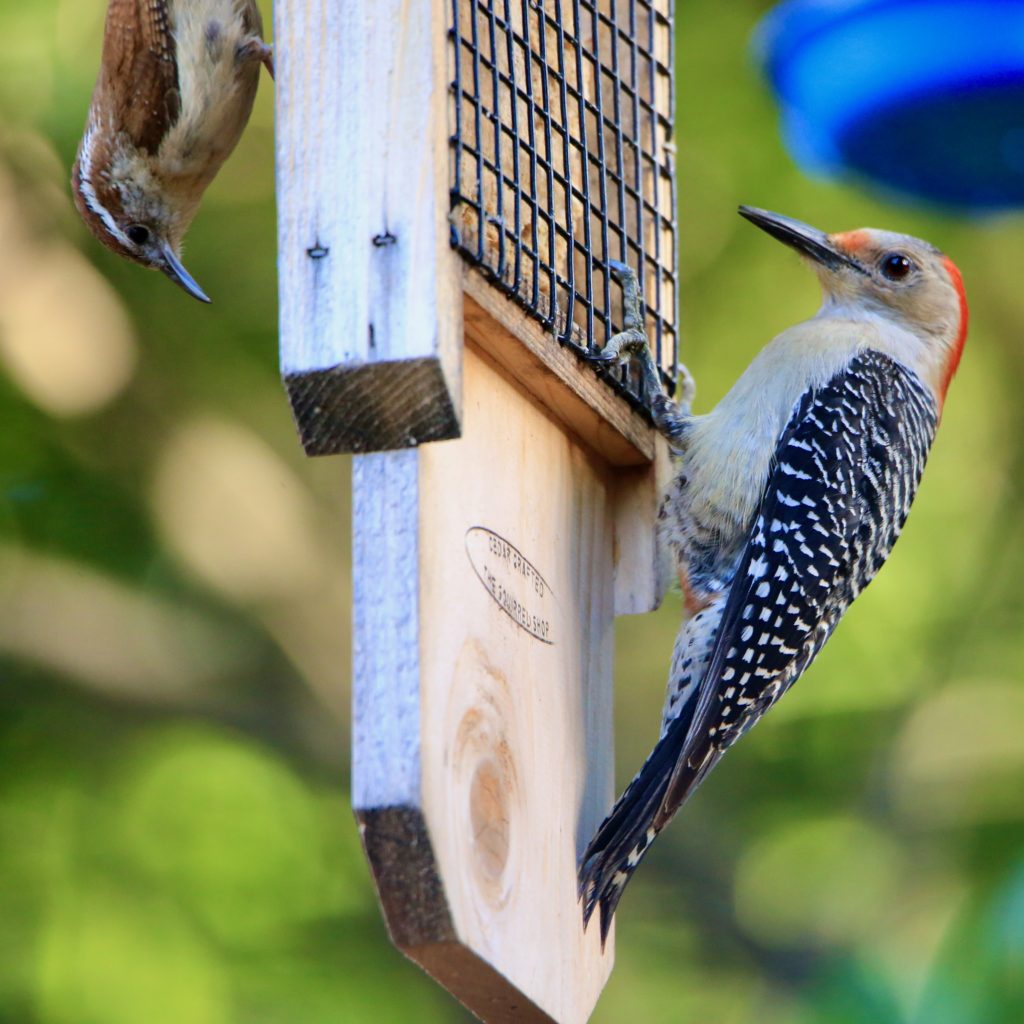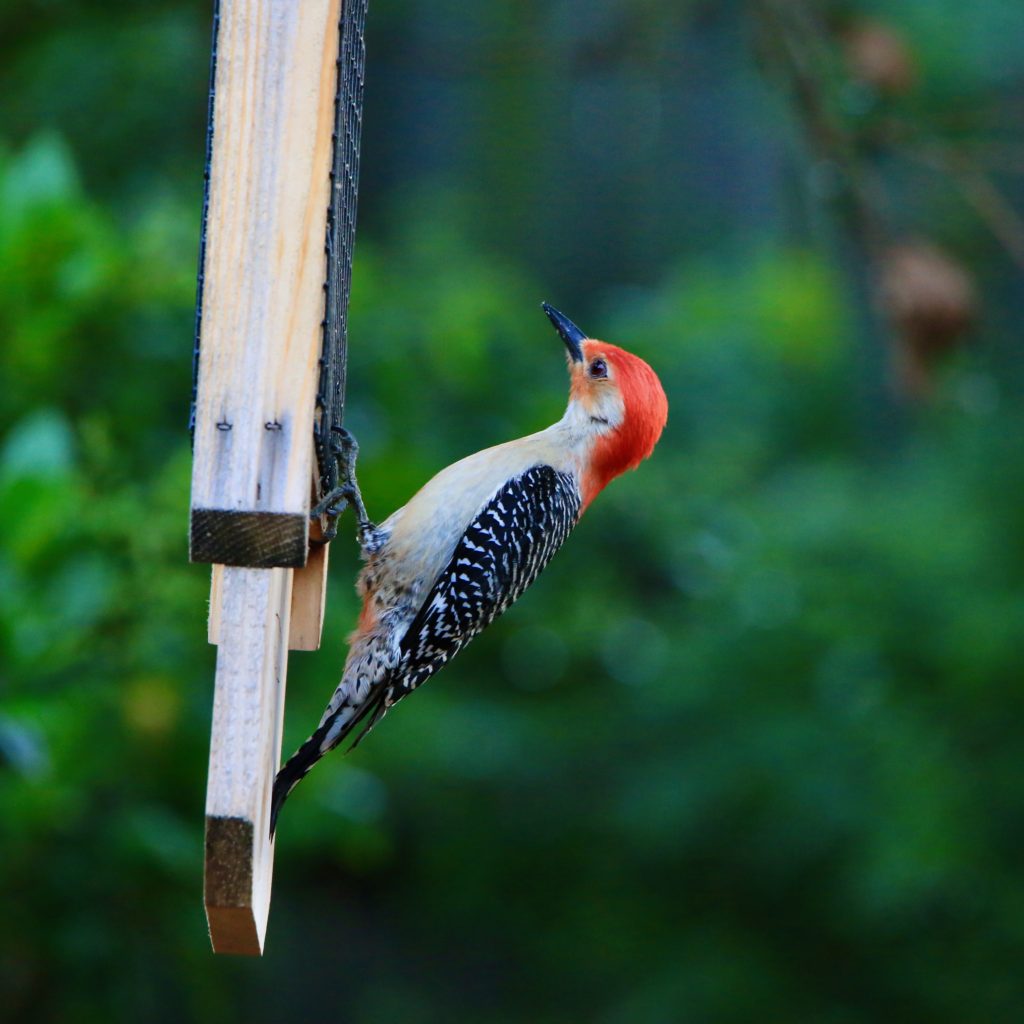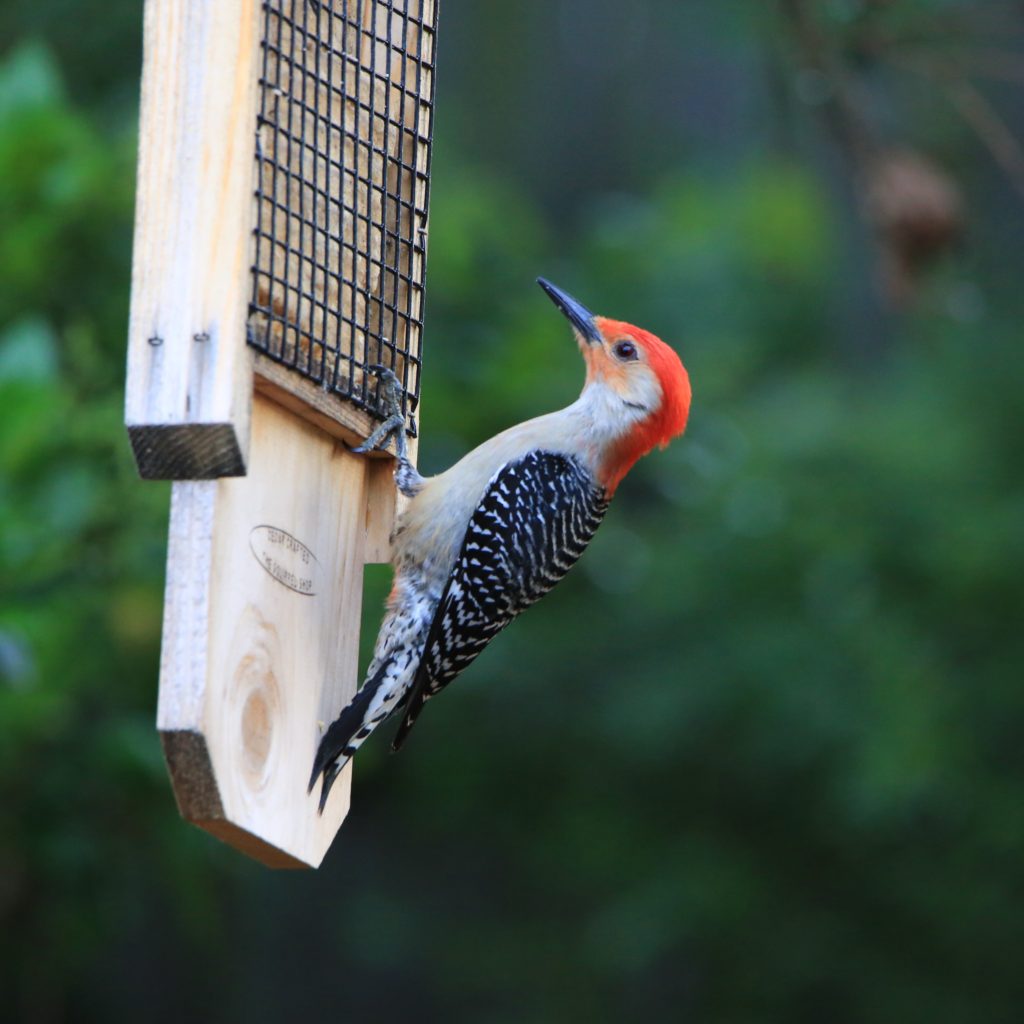
Red-bellied Woodpecker
A Red-bellied Woodpecker is a fun bird to see while bird watching. Below are some tips to help you identify Red-Bellied Woodpeckers. We have also put together a list of fun Red-bellied Woodpecker t-shirts, Red-bellied Woodpeckerbird patches, bird houses, bird feeders, binoculars, stickers and other fun bird watching items.
About Red-Bellied Woodpeckers
The Red-bellied Woodpecker is among some of the birds that have misleading names. Their bellies are of a light red that appears almost pinkish. The most conspicuous red colour is on their heads, which flows down to part of their backs. They are found in places such as Texas and northern Canada.
Description and Identification
Despite what the name suggests, the most prominent feature of these birds is actually the red streak on their head. Adult birds have grey faces and underbellies. They have white and black barred patterns on their back, wings, and tail. Adult males have a red streak from their bill to their nape, and adult females have a red patch on their nape and above their bill. They are medium-sized birds that weigh between 51g to 91g. They have long, sharp beaks that are strong enough to chisel away the deadwood. They have a dark red to reddish-brown eyes.
Red-bellied Woodpecker Size
Length: 22.85 to 26.7 cm
Wingspan: 38 to 46 cm
Red-bellied Woodpecker Appearance
Adults are generally grey on both the upper and lower sides, with black and white patterns on their wings, tails, and backs. Males have a bright red cap that runs from their bills to their napes whereas females’ caps only appear at the napes.
In field identification, the pinkish-red tinge on their bellies is hard to spot but is visible from a close range.
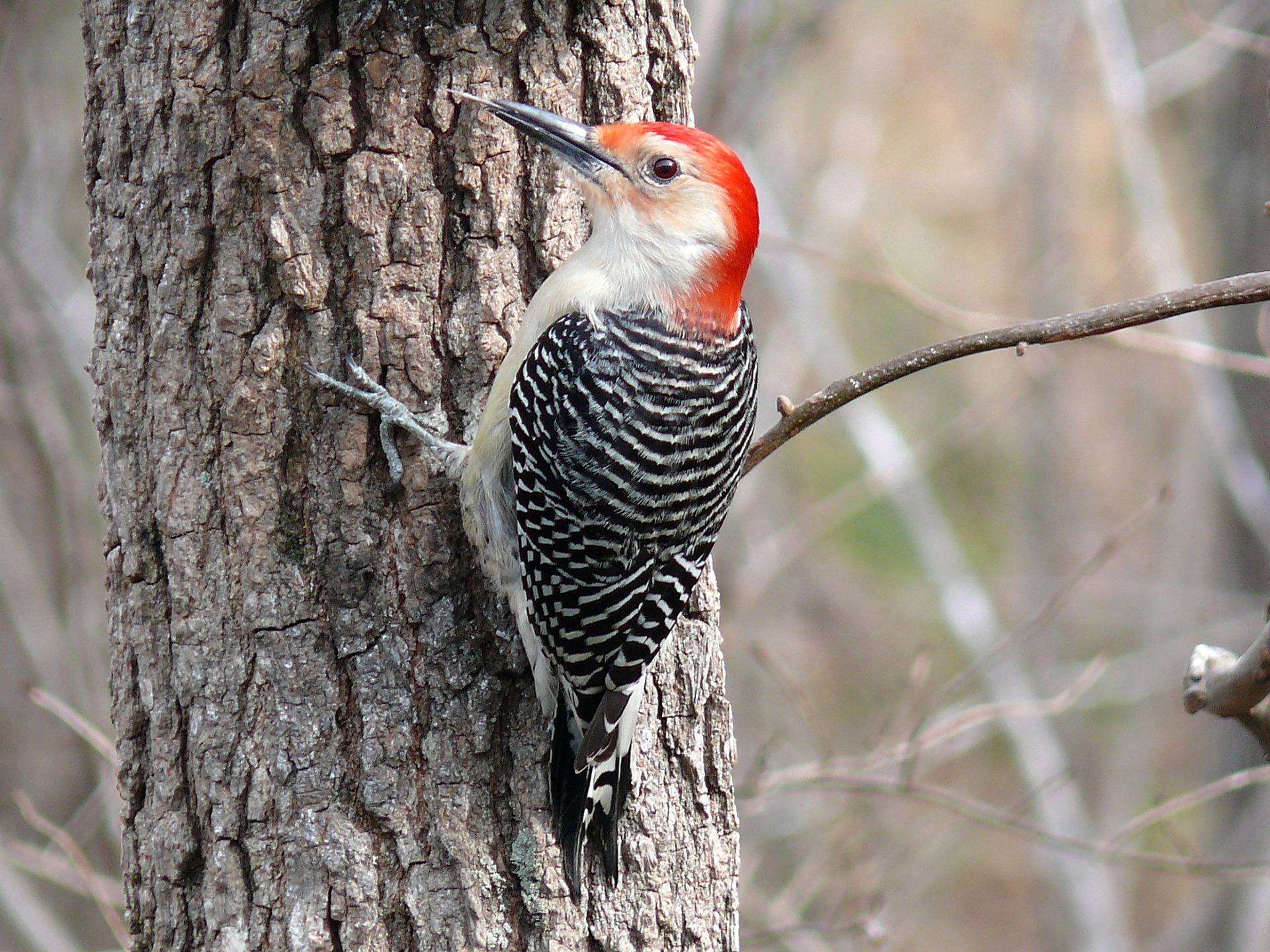
Red-bellied Woodpecker Feeding
As omnivores, Red-bellied Woodpeckers eat insects, fruits, nuts, and seeds. Their diet consists of arthropods, found on tree trunks. Their tongue is sticky and can extend out of the beak up to 2 inches. They are well adapted to grabbing food and probing deep into cracks in the wood. They pull out beetles from tree trunks with the help of their tongue. They also use this behavior for storing food behind the bark of a tree or within deep cracks in trees, just like other woodpeckers in their genus. Red-bellied Woodpeckers forage for food and store it. They also catch insects mid-flight.
The Red-bellied Woodpecker feeds on insects that it gets from drilling into trees. It also actively forages and stores food in some of the holes that it drills in the tree trunks.
Red-bellied Woodpecker Habitat
Their breeding habitat is primarily deciduous forests. Red-bellied Woodpeckers depend on dead and decaying woodlands for their nesting and feeding requirements, which are common in forests of the East. They can thus be attracted into backyards with dead trees and feeders filled with suet, peanuts, and sunflower seeds. They are frequently found in forests, parks, and suburban yards of Pennsylvania. Interestingly, male birds have been found to peck on plumbing pipes of old houses to attract the attention of the females.
Red-bellied Woodpeckers live in nests that they drill in tree trunks. They prefer trees that are in areas with low canopy coverage and are in open spaces. However, some have been known to live in dense forests with no problem at all. The nests usually change in location during every year’s breeding season.
Range and Migration
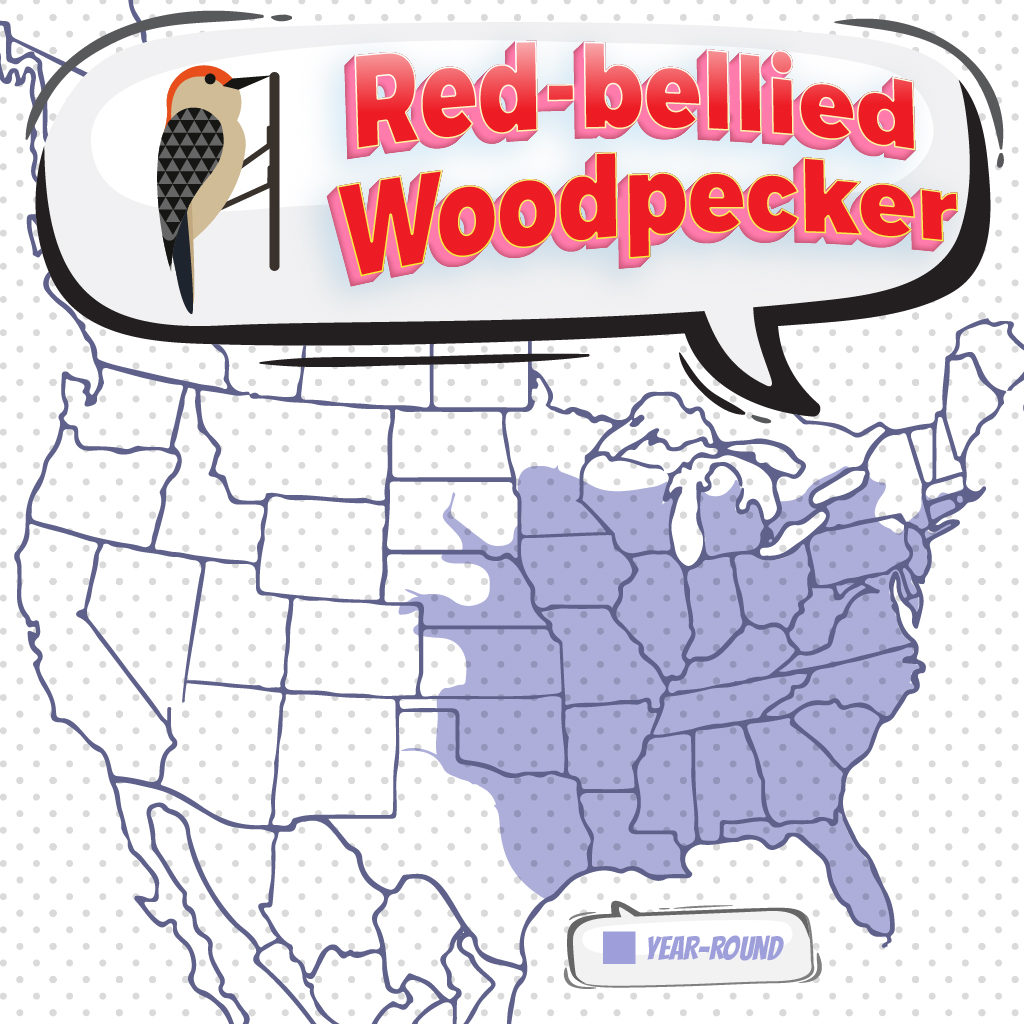
Members of the family Picidae, Red-bellied Woodpeckers have a wide range. They cover a range that goes as far north as Canada, and as far south as Florida. Abundant in the forests of Georgia, and North and South Carolina, they are also common in Eastern woodlands and forests and are usually spotted at middle heights, along main branches and tree trunks. They can sometimes be spotted in urban settings with backyard feeders. These birds are not considered a migratory species, although there is some movement within their range during the winter season. While most birds migrate south during the cold months, some of the bolder Red-bellied Woodpeckers who migrate north during the winter, are considered to be potential competition to the other types of birds in those regions.
Red-bellied Woodpecker Life and Behavior
The adult red-bellied woodpeckers live in a pair of a mated male and female. During courtship which begins in early May, the male woodpecker drums on tree trunks and calls out to attract females. They have also been observed by researchers to drum rapidly and rhythmically on aluminum house gutters to amplify their drumming sounds
Males pick out nesting sites and seek approval from their mates. The mates approve these sites by finishing the excavation and entering the nest. They both actively partake in raising their younglings, with the males playing a protective role.
Nesting
Nesting and breeding activities begin in early May. They build monogamous relationships and use vocal signals to communicate with potential mates. They usually nest in clear areas with few trees. They are territorial during the nesting season, and breed once per year. Their nests are built with dead and drying wood. The males initiate nesting by locating a nest hole. They seek approval of their female mates by mutual tapping. Both sexes then contribute to the building of the nest. They mark their nests by drilling holes in areas around the nest to warn others and keep them away.
Ornithology
Bird Watching Academy & Camp Subscription Boxes
At Bird Watching Academy & Camp we help kids, youth, and adults get excited and involved in bird watching. We have several monthly subscription boxes that you can subscribe to. Our monthly subscription boxes help kids, youth, and adults learn about birds, bird watching, and bird conservation.
Bird Watching Binoculars for Identifying Red-Bellied Woodpeckers
The most common types of bird watching binoculars for viewing Red-Bellied Woodpeckers are 8×21 binoculars and 10×42 binoculars. Bird Watching Academy & Camp sells really nice 8×21 binoculars and 10×42 binoculars. You can view and purchase them here.
Red-bellied Woodpecker T-shirts
If you love the Red-bellied Woodpecker you should purchase a Bird Watching Academy & Camp T-shirt. To help support bird conservation we donate 10 percent to bird conservation activities.
Red-bellied Woodpecker Iron On Patches
Kids, Youth, and Adults love to collect our Bird Watching Academy & Camp iron on patches. Our bird watching patches help you keep track of the birds you have seen an identified. You can also display the patches on our Bird Watching Academy & Camp banners.
The Red-bellied Woodpecker is a great iron on patch to start your collection with. The patches are durable and can be sewn on or ironed on to just about anything.
Red-bellied Woodpecker Stickers
Stickers are a great way for you to display your love for bird watching and the Red-Bellied Woodpecker. We sell a monthly subscription sticker pack. The sticker packs have 12 bird stickers. These sticker packs will help your kids learn new birds every month.
Bird Feeders For Red-Bellied Woodpecker
There are many types of bird feeders. Here are our favorite bird feeders for your backyard. We use all of these bird feeders currently. Kids will have a great time watching birds eat at these bird feeders. Using this collection of bird feeders will provide a wide variety and many types of birds.
Best Bird Houses for Red-Bellied Woodpecker
There are many types of bird houses. Building a bird house is always fun but can be frustrating. These 4 bird houses have become our favorites. Getting a bird house for kids to watch birds grow is always fun. We spent a little extra money on these bird houses but they have been worth the higher price and look great.
Red-bellied Woodpecker Activities for Kids
We thought a fun perler bead pattern would be fun for kids. Please download and print with 100% scale to fit perfectly with perler bead patterns.
